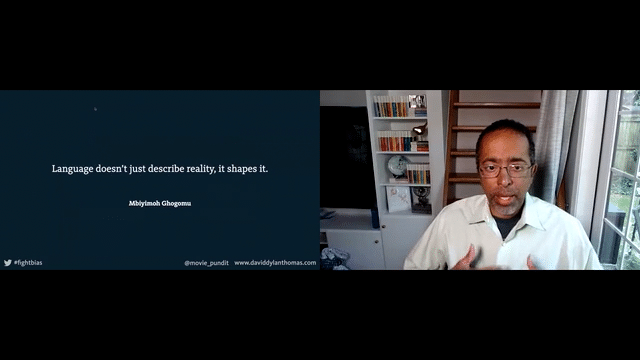There’s a huge amount of hype around product-led growth (PLG) at the moment, particularly when it comes to software as a service. You can see why: product-led businesses harness their product as their engine for growth and their users as their sales teams, so in theory they grow faster, see better customer acquisition and retention, faster growth, deliver a better customer experience, have shorter sales cycles – what’s not to love?
Product-led companies then prize customer-centricity over all else, with customer feedback and data used to inform and drive product development. Because they leverage their products as the means of acquiring and retaining customers and driving growth, they’re not constrained by the rate at which they can hire sales staff. They typically allow users to try their products for free, their onboarding is effective, product development is iterative, and they’re geared up to be scalable.
PLG characteristics
The main attributes and benefits of a product-led business are summarised below:
- Customer centricity, which should mean higher customer satisfaction and loyalty.
- Try before you buy through free or freemium versions of the product. Upgrades are offered at a cost, and encourage users to buy the pro version of the product as they understand its value.
- Product development is driven by customer feedback and development. The business relies on data and analytics to track user engagement and optimise the user experience.
- Product development is achieved through continuous iteration.
- Onboarding is simple and effective so that users can quickly start to use the product and understand its value.
- Self service through easy-to-use products is key. It minimises the cost to the supplier and means that customers can get up and running with little or no training.
- Teams are cross-functional, autonomous and they experiment so that they can make incremental improvements to the product. They are often led by product managers.
Think of a hugely successful digital app and the chances are that it espouses a product-led model. Dropbox, Slack, Zoom and a multitude of other SaaS products fall into this category.
PLG challenges
There are also some big challenges that come with being product-led. A few of them are shown below:
- At some point (and preferably pretty quickly) the users of your free product need to convert to paying customers or your business model falls apart. How do you find the right balance between growth and monetisation?
- Managing churn rates and retaining users is a huge challenge in a competitive market.
- Investing in product development and adapting your product must be continuous and this is expensive to maintain.
- Customer acquisition can be expensive, even if the business is product led – Users still need to be attracted to a product and it must be differentiated from competitors.
- If you’re relying on user feedback from a large user base to inform your product’s future direction, this can be tough to manage and act upon effectively.
- You need the right team of people – people with the right expertise and experience who thrive in a cross-functional autonomous environment.
Of course not all organisations are suited to being product-led. Businesses in highly regulated industries for example, or businesses where the user can’t self-serve, or where there’s a complex customised solution, won’t be suitable candidates for the product-led model.
How do you make the transition to product-led growth?
The big catch in all of this is that the transition to becoming product-led is hard. Not only does it require a great product and a peerless user experience, you’re also undertaking some fundamental transformations to company culture and ways of working. It requires very careful planning and a huge commitment. As Sameer Kazi, President of ActiveCampaign, comments in this article, Why Product-Led Growth Is The Sustainable Way To Grow Your Business in Forbes: “Implementing it successfully doesn’t happen by introducing a few new initiatives or touting it in your latest company meeting. Product-led is a structure and ideology that needs to be infused into the business’ core. It should be the epicentre of all your processes.”
In the broadest terms, you must first establish whether the business is suitable – does it lend itself to being product-led or are its products used primarily to support the services it provides? If this is established, you need buy-in from the C-suite, an honest assessment of your strengths and weaknesses, and an evaluation of what needs to change. Then you can plan how to go about making sure those changes are long-lasting and successful.
Adam Thomas, Product Lead at Mind the Product, advises that you start by undertaking a trust check. He comments: “If the other parts of the business do not trust or at least understand how you work, then how will they trust being led by you. Product leaders should reach out to peers and get a sense of what the business thinks of Product, and how they interpret the work that is being done.”
Just as importantly, the product team must be fully engaged with the process and understand what’s expected of them. As Adam says, they’re going to be representatives of the PLG methodology, and they will need some structure on expectations, review and iteration.
This case study, The journey to becoming a product-led company, gives a thorough and readable account of the steps taken to transform a services-led business – Australian healthcare data analytics solution provider Prospection – to a PLG model. Prospection CPO Kirsten Mann recounts her company’s journey and the 10 transformational changes it undertook.
As Kirsten says: “Moving from services-led to product-led is a significant transformation. It involves the redefinition of business strategy, organisational structure, relevant infrastructure and policies, as well as shift in mindset for how the new business and teams will operate throughout the product life cycles. The go-to-market strategies are markedly different. And of course, the product must be suitable for customer use as a primary requirement – it’s no longer a consultant tool for delivering customer value.”
Expectations of product managers change
There’s plenty of advice around on the transactional steps that need to happen when a business moves to a PLG model. Less frequently addressed are the differences in expectations from the product team, as this article by Yann Sarfati, How to thrive as a product manager in a product-led growth organisation, points out. He says, for example, that product managers must focus on different responsibilities and learn how to incorporate friction points so that users are impelled to convert from free to paid versions of the product.
A product manager is essentially a growth manager in a product-led business, and as such must have the experience and expertise to “lead growth experiments to understand how different feature combinations or user journey designs affect user engagement and conversion, and precision-test the best place and timing to insert in-product friction points like a payment nudge”.
Jonny Schneider, product leader and author of Understanding Design Thinking, Lean and Agile adds a word of warning. He says that while business leadership wants to create a modern product-led organisation, they too often hire inexperienced product managers and expect too much of them. He adds: “In theory it’s terrific… but a lot of organisations are still quite technology-led. Often it’s technology leaders who are hiring to build out a product capability, and they’ve gotten it wrong from the first product hire.”
What about the future?
So notwithstanding the above, is the product-led model set to take over the world? It’s early days and numbers are hard to come by, but this research from ProductLed, SaaS Growth Benchmarks: Key Product-Led Findings and Trends interviewed over 600 B2B SaaS companies last year and found that the majority (58% of the companies surveyed) are already investing in product-led growth. Of those who do have a PLG strategy in place, 91% of them plan to increase their investment in 2022 – and 47% of these plan to double their investment.
Are the businesses that have embraced product-led growth notably more successful than those that haven’t? There are already some suggestions that some sort of compromise might be in order, given the difficulties of implementing a product-led model.
Here’s some food for thought: a recent report from McKinsey, From product-led growth to product-led sales: Beyond the PLG hype, looked at 107 publicly listed B2B SaaS providers and concluded that a product-led growth strategy often has to be complemented by elements of a more traditional enterprise model in order to succeed. As the report says: “Our research suggests that only a few companies that use it actually achieve outsize performance, and they do so by increasingly developing a hybrid motion known as product-led sales (PLS). This innovative approach combines elements of PLG with the more traditional enterprise model of sales-led growth (SLG), in which a salesperson sells the software in a long sales cycle, typically to a senior executive. Our research further shows that the companies that implement PLS most effectively can enjoy sizeable boosts in both revenue growth and valuation ratios.”







Comments
Join the community
Sign up for free to share your thoughts